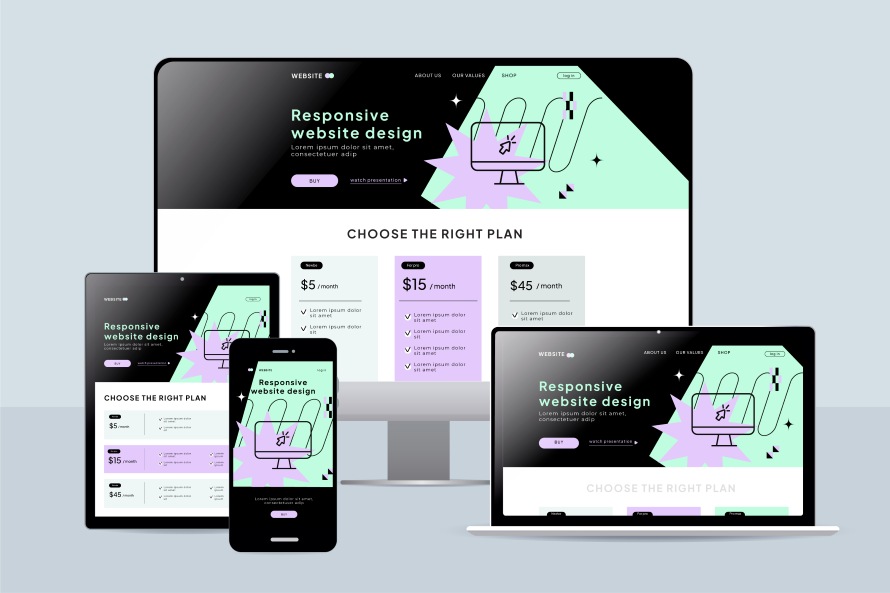
Trust-Building Elements: How Testimonials Influence Conversions
Imagine landing on a website and seeing no reviews, no testimonials, no recognisable certifications—just claims. Would you trust it with your money or details?
Probably not.
In a digital world full of scams and copycat brands, trust is the ultimate currency. And when visitors don’t know you personally, it’s the elements on your website that do the convincing. This is where testimonials, reviews, and certifications come in. They’re not “nice to have”—they’re conversion levers.
In this blog, I’ll break down exactly how trust elements work, how to use them effectively, and the common traps to avoid. Whether you’re a consultant, agency, eCommerce shop or local business—these principles will apply.
Why Building Trust Is the New Conversion Strategy
People don’t convert when they’re confused or uncertain. They convert when they feel safe and confident that you’ll deliver what you promise.
The Psychology of Trust in Digital Spaces
Online, users can’t read your body language. They can’t shake your hand. They rely on cues and signals to decide whether you’re credible. These include:
- Other people’s experiences (testimonials, reviews)
- Third-party validation (certifications, awards)
- Clarity of messaging and visual professionalism
First Impressions Matter
Studies show that users form trust judgments within 0.05 seconds. If your site lacks trust markers, they’ll bounce—especially if you're selling a service or asking for contact details.
What Are Trust Elements (and Why Do They Work)?
Trust elements are content and visual components that make users feel secure in taking the next step—buying, booking, signing up.
They work because they shift the message from “we’re great” to “others say we’re great”. This third-party credibility builds confidence faster than anything you write yourself.
Social Proof in Action
Social proof is a psychological phenomenon where people copy the actions of others in an attempt to make the “right” decision. When they see real people endorse your brand, they feel safer.
Types of Trust-Building Elements That Boost Conversions
1. Client Testimonials
One of the most powerful elements. Written or video testimonials help visitors relate to past clients. Great testimonials include:
- Specific results (“Increased leads by 40%”)
- Human detail (“Robi was always available when we needed help”)
- Headshot and name/company if possible

2. Reviews on External Platforms
Google Reviews, Trustpilot, Yelp, and Clutch reviews matter because they’re verified and harder to fake. Embedding these shows transparency and real-world results.
3. Certifications & Accreditations
Whether it’s a Google Partner badge, ISO certification, or “Certified Financial Planner,” these symbols tell your visitor: you meet a high standard.
4. Security Badges
If you collect payments or user data, display SSL badges, payment logos (Visa, PayPal), and trust seals to increase confidence—especially at checkout or sign-up.

Where to Place Trust Elements for Maximum Impact
Homepage Hero or Above-the-Fold
Right under your headline or intro paragraph—include 1–2 testimonial quotes or a star rating widget with “Rated 4.9/5 by 83 happy clients.”
On Service and Pricing Pages
These are high-resistance pages. Reinforce value with video reviews, case study quotes, or credibility logos right next to your call-to-action buttons.
Contact Page or Checkout Page
Place a final testimonial or a guarantee badge near the form to reduce last-minute doubt. You can also show “100% Response Rate” or “Typically replies in under 1 hour.”
How to Get Great Testimonials from Clients (and Use Them Well)
Most businesses don’t lack happy clients—they just never ask for feedback properly. A vague “Can you write us a testimonial?” rarely delivers results. Here’s how to get testimonials that actually convert:
Ask Specific Questions
- What made you choose us?
- What results did you get?
- What was the experience like working with us?
- Would you recommend us to others?
Send these after a successful milestone—like after delivery or project launch.
Use Real Names, Titles, and Faces
If privacy allows, include a photo, full name, role or company. This builds authenticity. Video testimonials are even more powerful—just one 30-second clip can outperform paragraphs of text.
Design Testimonial Sections Like Case Studies
Use layout, contrast, and pull-quotes to highlight key phrases. Consider using sliders, cards, or alternating blocks to break up repetition on long pages.
Trust-Building Mistakes to Avoid
Fake or Generic Testimonials
Never invent reviews. Visitors are smart—they’ll sense it. Generic praise like “Great service!” adds no real trust value. Be specific or leave it out.
Burying Reviews on a Hidden Page
Don’t hide testimonials on their own island. Integrate them into your homepage, service pages, and CTAs where users are deciding whether to engage.
Overloading with Meaningless Badges
Only use badges that are recognisable and credible. “Top 10 Web Designer 2022” from an unknown directory can do more harm than good.
How Google Sees Trust: E-E-A-T Signals and Schema
Google’s ranking guidelines heavily favour websites that demonstrate Experience, Expertise, Authoritativeness, and Trustworthiness—aka E-E-A-T.
How Testimonials Help E-E-A-T
Genuine testimonials show real-world experience with your services. If they’re from known individuals, they support your credibility. When linked to case studies, they enhance trust.
Schema Markup for Reviews
Use structured data (JSON-LD) to mark up your reviews or testimonials. This can help trigger rich snippets in Google search and reinforce trust signals.
Example Schema Types to Use:
- Review schema for testimonial quotes
- Organization schema with sameAs links to your Google/Trustpilot profile
- LocalBusiness schema with aggregate ratings
Quick Checklist: Does Your Site Pass the Trust Test?
- ✔ Do you have at least 3–5 real testimonials with names/photos?
- ✔ Are Google or Trustpilot reviews embedded or linked?
- ✔ Do you display recognisable certifications or awards?
- ✔ Are trust signals visible on high-conversion pages?
- ✔ Is your contact and checkout process secured with badges?
If you answered “no” to any of the above—it’s time to optimise your trust strategy.
Frequently Asked Questions
What makes a testimonial effective?
An effective testimonial is specific, authentic, and emotionally resonant. It should describe a challenge, how your service helped, and what results were achieved.
Should I display Google Reviews on my website?
Yes. Embedding verified reviews builds transparency and gives your site external validation. Use widgets from platforms like Trustpilot, Reviews.io, or Google My Business.
Can fake badges or testimonials hurt my site?
Absolutely. They damage trust, reduce conversions, and can even hurt your SEO if flagged. Always use real trust indicators and obtain client permission.

Written by Robiul Alam
Founder of Nextuix, with over 9 years of hands-on experience helping business across London,UK.